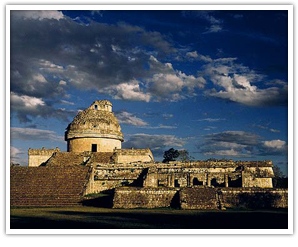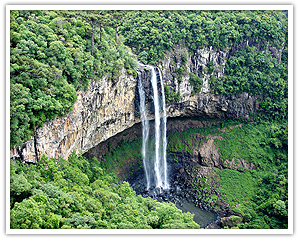
Caracol's central core today, as seen by visitors, consists of three plaza groups surrounding a central acropolis and two ball courts, along with a number of smaller structures. Discovered in 1938 by loggers, excavations did not begin until 1950, with most of the work having taken place since 1985. Caracol can truly be described in superlatives: Largest archeological site in Belize - One of the largest in the Maya world - Tallest man-made structure in Belize (Caana) - Most structures, largest area, largest population, most hieroglyphics etc ...
Caracol was linked together by more than 20 miles of roadways that radiated outward from its epicenter like the spokes of a wheel and it is estimated that 200,000 or more Maya lived in the area when this important City-State reached it's peak around 700 A.D.
 Many hieroglyphic texts have been found on stelae, alters, ball-court-markers, capstones and wall facades. The discovery of an elaborately carved ball-court-marker dating back to the end of the early Classic Period has been interpreted as Caracol claiming a military victory over Tikal, located more then 60 miles away in Guatemala. Many hieroglyphic texts have been found on stelae, alters, ball-court-markers, capstones and wall facades. The discovery of an elaborately carved ball-court-marker dating back to the end of the early Classic Period has been interpreted as Caracol claiming a military victory over Tikal, located more then 60 miles away in Guatemala.
Evidence of Post-Classic occupation is lacking, thus presenting a similar situation to that found at other Classic sites in the region. Situated within the Chiquibul Forest, Caracol archeological site and the surrounding area are rich in tropical flora and fauna. Today, Caracol is a Maya city in the process of being recovered from the jungle. Excavation in and around Caracol and reconstruction of the Caracol site itself are ongoing during the dry season.
|
